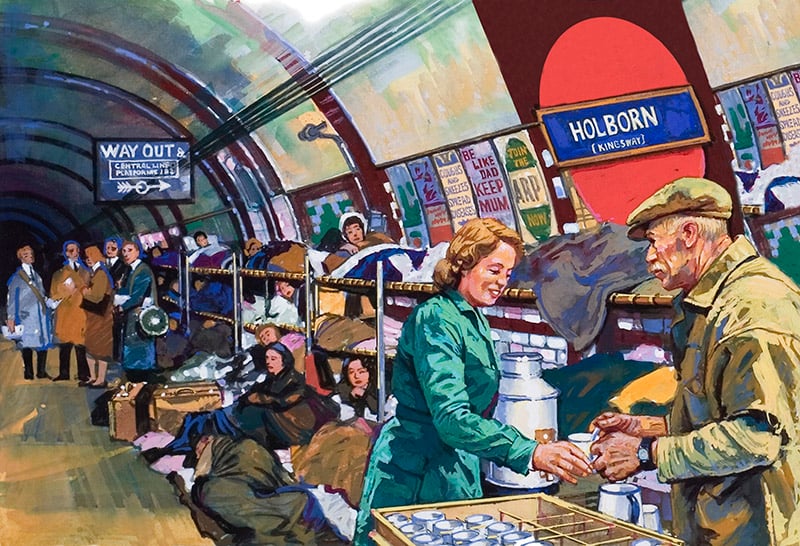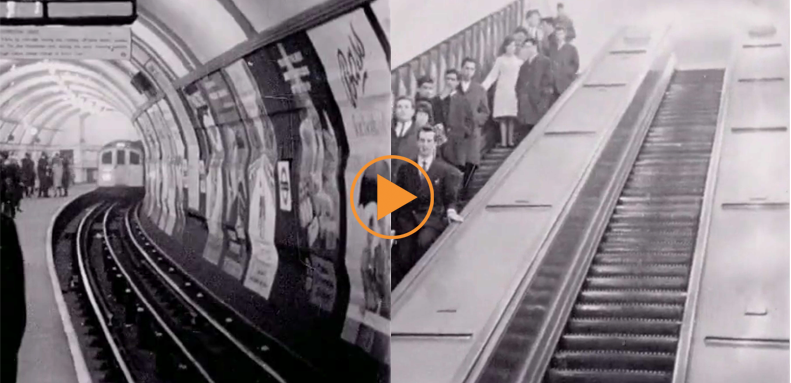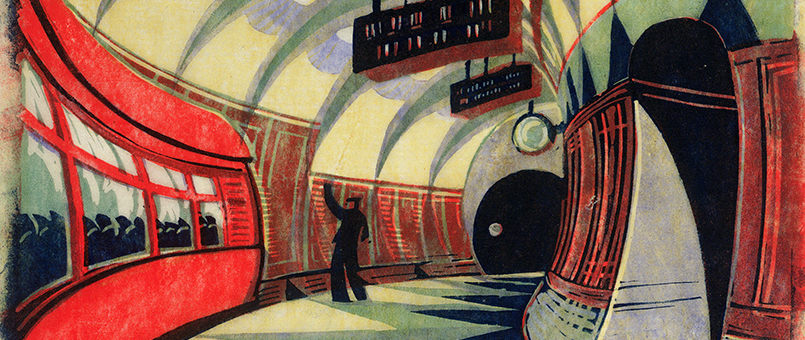
A History of the London Underground in Pictures
Since its creation over 150 years ago, the London underground network has expanded to service 270 stations, becoming the second largest metro system in the world and establishing some of the most iconic and recognisable designs of the 21st century.
Over the years the London Underground has certainly had an eventful history, and now it is expected to transform London and the transport industry even further with the introduction of a much anticipated night tube service this August.
From Cyril Power‘s cascading escaltors to Henry Moore‘s depictions of Londoners taking shelter in the tunnels during the Blitz, find all the images you need to celebrate this legendary network in the Bridgeman archive.
1863 – Opening of the first London Underground line
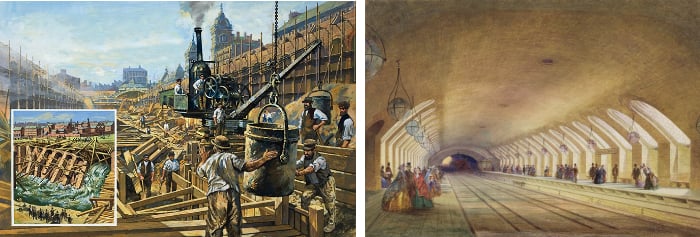
Left: Construction of the First Underground Railway, Harry Green (b.1920) / Private Collection / © Look & Learn
Right: Baker Street Station, 1863, Samuel John Hodson / Yale Center for British Art, Paul Mellon Collection, USA
In 1862 the Chancellor of the Exchequer, William Ewart Gladstone, and directors and engineers of the Metropolitan Railway Company, embarked on an inspection tour of the world’s first underground line.
On the 10th January 1863, The Metropolitan Railway opened the world’s first underground railway, between Paddington (then called Bishop’s Road) and Farringdon Street.
1890 – The World’s First Electric Railway
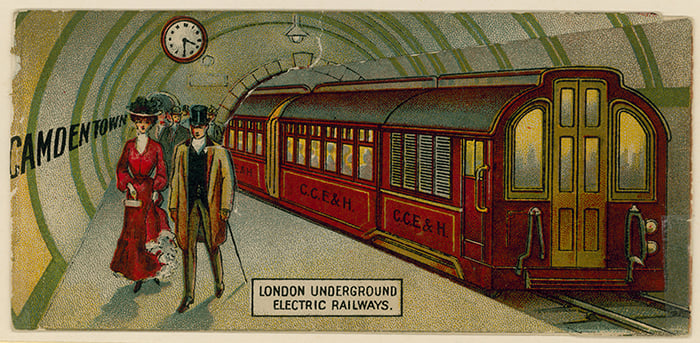
Camden Town Underground Station , English School (19th C) © Look and Learn / Peter Jackson Collection
On the 18th December, The City and South London Railway opened the world’s first deep-level electric railway. It ran from King William Street in the City of London, under the River Thames, to Stockwell
1908 – The Red Roundel
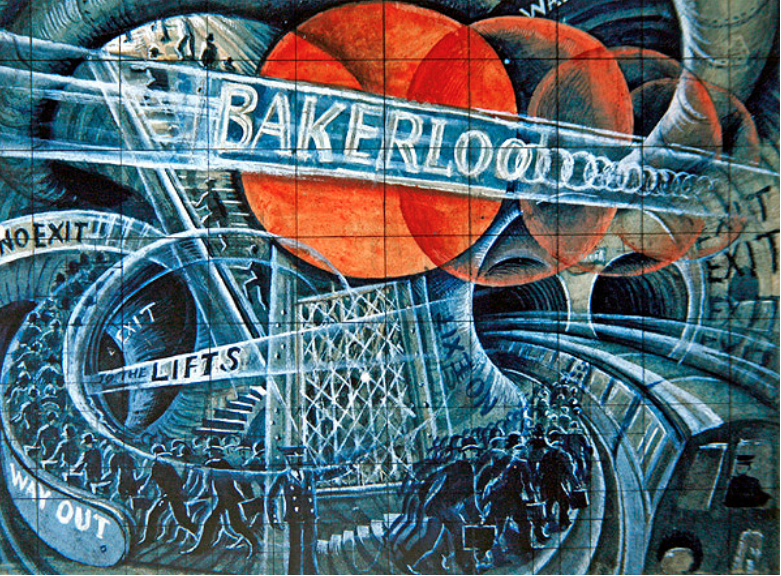
Underground, C20th, Christopher Richard Wynne Nevinson / Private Collection / Michael Parkin Gallery
In 1908 the name ‘Underground’ made its first appearance in stations, and the first electric ticket-issuing machine was introduced. This year also saw the first appearance of the famous roundel symbol.
The Underground roundel was born after it was decided that there needed to be a more obvious way of highlighting station names on platforms. Initially a simple red circle with a blue name bar, it soon changed to a white circle inside a red background. Every station on the London Underground network displays the roundel, often containing the station’s name in the central bar.
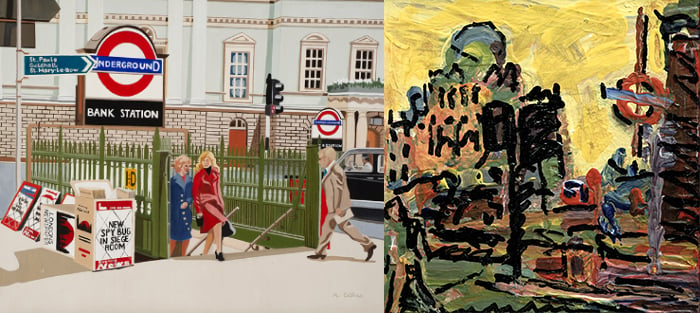
Left: Bank Station Underground by Marjorie Collins, Imperial College Healthcare Charity Art Collection, London
Right: Camden Palace, 2000, Frank Auerbach / Pallant House Gallery, Chichester, UK / Wilson Gift through The Art Fund
Bridgeman represents several artists who have used the London Underground in their works. An instantly identifiable symbol for the Underground and London, the roundel features prominently in images by Frank Auerbach and Christopher R.W. Nevinson.
1913 – The Iconic Johnston Typeface
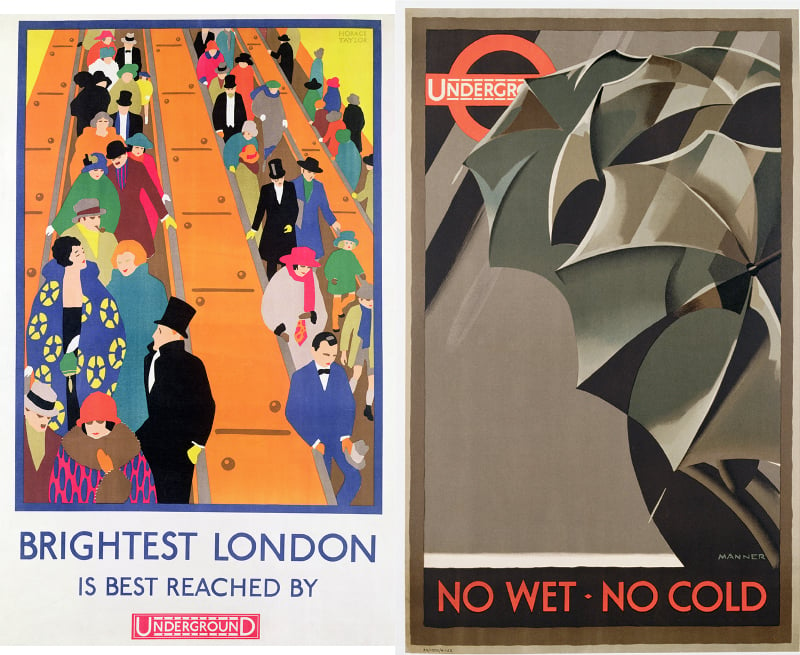
Left: Brightest London is Best Reached by Underground, 1924, Victoria & Albert Museum, London
Right: Advertisement for the London Underground, 1929, Manner / Private Collection / DaTo Images
In 1913, Edward Johnston was commissioned to design a typeface that would ensure that the London Underground posters would not be mistaken for advertisements. Johnston created the sans-serif typeface which has become synonymous with the London Underground. A feature of the classic font is the perfect circle of the letter O, while the capitals are based on Roman square capitals.
1931-33 – The Radical Electronic Circuit
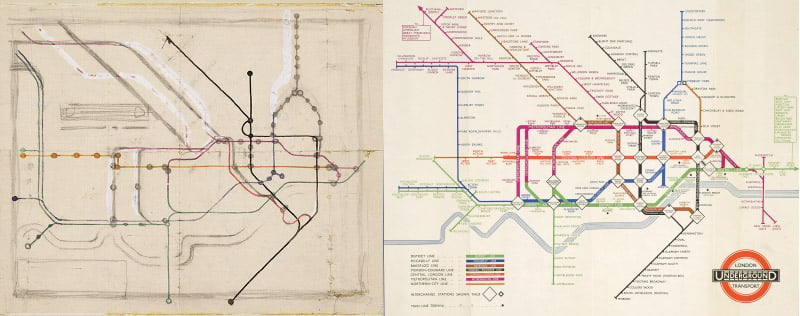
Left: Sketch for the original map of the London Underground, 1933 by Harry Beck, Victoria & Albert Museum, London, UK
Right: London Underground Map, 1936, Harry Beck/ Private Collection / Photo © Christie’s Images
In 1931 Henry Charles Beck, an electronics engineer, began to design a London Underground map based around a series of simple, horizontal lines. As the early sketched image on the right depicts, Beck based his map upon an electrical schematic. Beck presents the first diagram in 1933.
Although his design was strongly influenced by public opinion, the map was initially rejected for being too radical. However, after two years it was accepted and its format has been imitated by subway, bus and transit companies around the globe.
1940-41 – Shelter during the Blitz
With the arrival of the bombing campaigns of the Second World War, stations on the London Underground became critical for more than travel; to many they meant the difference between life and death. During WWII, nearly two hundred thousand Londoners sought shelter from the bombs of the Luftwaffe in the Underground stations.

Left: Miss Potter teaching children in a maths lesson in Elephant and Castle Underground Station as they shelter during an air raid over London, March 1941. / London, UK / © Mirrorpix
Right: Two Sleepers, 1941 (chalk, w/c & wax crayon) by Henry Spencer Moore, Pallant House Gallery, © The Henry Moore Foundation. All Rights Reserved, DACS 2017
Determined that life should continue as normal, people began to organise themselves into committees tasked with providing places to sleep, food, entertainment, and even school lessons.
Slowly Underground Stations transformed from the dark, nightmarish spaces pictured in the works of Henry Moore to spaces of security and reassurance. Watch haunting footage from the Bridgeman archive of Londoners sheltering in the Underground during the Blitz.
1950s onwards – Continuous Expansion and Improvement
The London Underground constantly aims to improve its infrastructure, service and general regulations. Thanks to developments in industry and technology, 1952 saw the first aluminium train entering service on the District line, and 1961 saw the end of the electric and steam locomotive haulage of London Transport passenger trains.
In response to the needs of the London community and commuters, the Queen opened the Victoria line in 1969, and the Prince of Wales opened the Jubilee line in 1979.
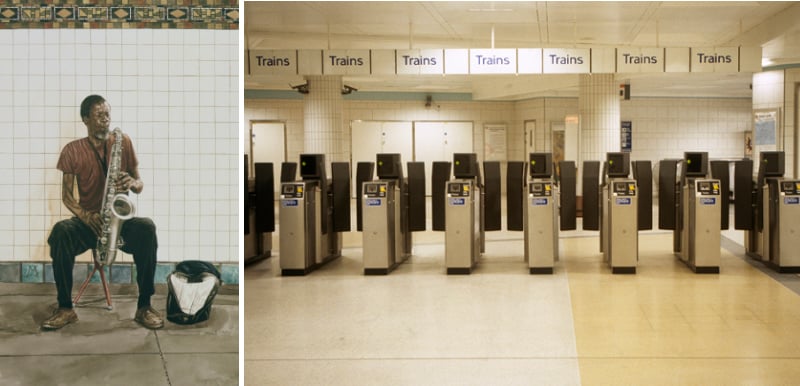
Left: Subway Saxophone, 2008 (w/c on paper), Max Ferguson / Private Collection
Right: Great Britain, England, London, ticket barriers at underground station; Dorling Kindersley / UIG
After a tragic fatal accident at Moorgate station in 1975 and a fire at King’s Cross station in 1987 killed a total of 74 people, new safety measures and fire regulations were put in place to ensure passengers’ well-being.
In 2003 the Oyster card was introduced, dramatically improving the ease of taking public transport. Busking was legalised in the same year, welcoming a host of talented musicians to fill the Underground with live music.
2013 – London Underground celebrates 150 year anniversary
The London Underground’s anniversary comes just 4 years after it was named Best Metro Europe in 2009. Reminisce by watching nostalgic footage from the Bridgeman Archive of the London Underground rush hour during the 1930s and the 1960s.
2016 – Introduction of the Night train
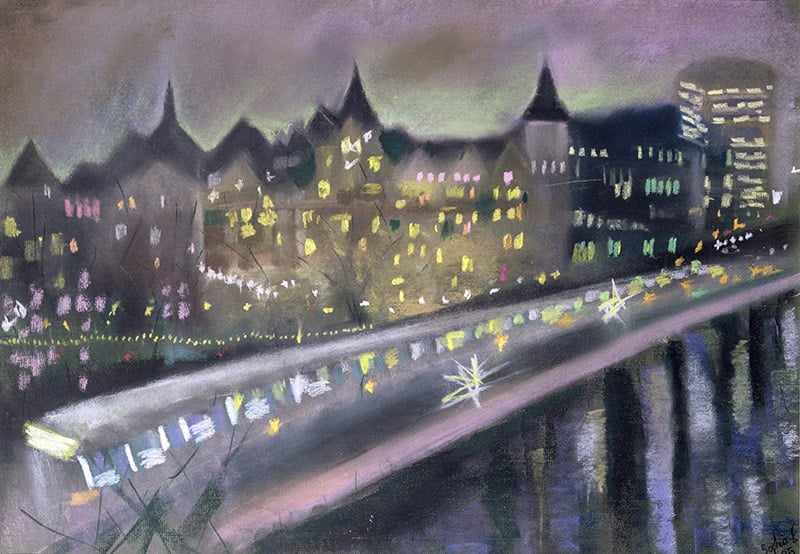
Hungerford Bridge, from the South Bank, 1995 (pastel on paper), Sophia Elliot / Private Collection / Bridgeman Images
A new night tube with 24-hour weekend service was launched on 19th August 2016 on Central & Victoria lines. Since the Tube’s inception, the idea of running night-time tube services has been difficult, mainly due to noise factors and the ongoing maintenance works that often occur during the night.
The mass upgrades to the overall London Underground network have now made the feasibility of introducing a limited night-time tube services a reality. The initial plans are for a Friday and Saturday night service on a limited number of main lines, with the prospect of expansion across further lines in subsequent years.
Find out More
Facts & Figures
- Number of miles travelled by each Tube train each year: 114,500 miles
- An average of 2.7 million tube journeys are made on the tube each and every day
- Only three babies have ever been born in the London Underground.
- Almost 60% of the London Underground is actually above the ground and not underground
- The nickname “tube” originally applied to the Central London Railway which was nicknamed the Twopenny Tube
- The phrase ‘MIND THE GAP’ originated on the Northern line in 1968
Images for Licensing
Get in touch with the Bridgeman team on uksales@bridgemanimages.com with enquires about licensing and clearing copyright.
Browse all London Underground images and clips.
Save
Save
Save
Save
Save
Save
Save

